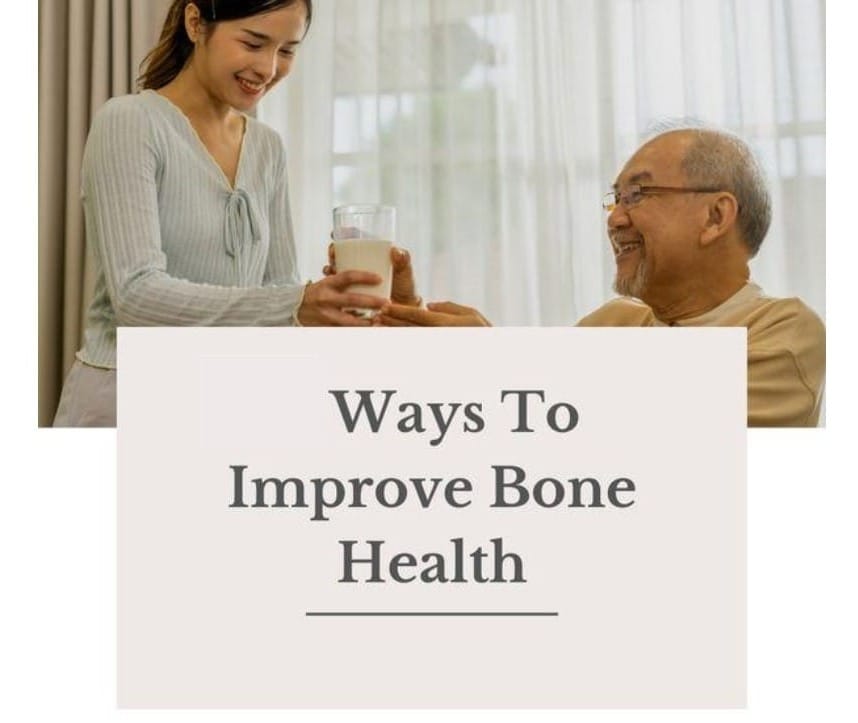Incorporating proper nutrition, regular exercise, and smart lifestyle choices offers significant benefits. Let’s delve into these effective methods to keep your bones strong and resilient.
Understanding Bone Health After 50
As you reach 50, your bones go through a significant transformation. The natural aging process causes your bone density to decrease at a rate of about 1% per year after age 40. By the time you hit midlife, you might notice that maintaining that once robust bone density becomes a more significant challenge. This gradual decline occurs because, with age, bones break down faster than they can be rebuilt, making conditions like osteopenia and osteoporosis far more common.

Maintaining bone health after 50 requires a multi-faceted approach. Adapting your diet to include more bone-strengthening nutrients like calcium and vitamin D is crucial. Incorporating regular physical activity, especially weight-bearing exercises like walking or resistance training, is equally important. These exercises help stimulate bone growth and maintain bone density. Lifestyle factors, such as avoiding smoking and limiting alcohol consumption, also play critical roles in supporting your bones as you age.
Supplements to Improve Bone Health
Supplements can play a crucial role in bolstering your bone health, especially after the age of 50 when natural bone density tends to decline. Calcium and vitamin D are the most well-known and essential supplements for strong bones. Calcium is a fundamental building block of bone tissue, while vitamin D ensures proper calcium absorption in the body. Many people don't get enough calcium from their diets alone; thus, supplements can help meet the daily recommended intake of 1,200 mg for women over 50 and men over 70. Besides calcium and vitamin D, magnesium, vitamin K2, and omega-3 fatty acids also support bone health by improving bone mineral density and overall skeletal strength.
However, supplements should complement a balanced diet, not replace it. It's advisable to get nutrients from food sources whenever possible, such as dairy products, leafy green vegetables, and fatty fish. Consulting with your healthcare provider before starting any new supplement regimen is key to ensuring it aligns with your specific health needs and conditions. Over-supplementation can lead to adverse effects, so focus on maintaining a well-rounded approach that combines a healthy diet, supplementation, and regular physical activity to optimize your bone health
Bone Health and Osteoprosis
Osteoporosis, often termed a silent disease, progresses without symptoms until a fracture occurs. Aging accelerates bone loss, leading to an imbalance where bone resorption outpaces bone formation. This condition results in decreased bone mass and structural deterioration, heightening the risk of fractures especially in the hip, spine, and wrist. Understanding the mechanisms of osteoporosis underscores the importance of preventive and management strategies to maintain robust bone health.
Addressing osteoporosis requires a multifaceted approach. Engaging in regular weight-bearing and resistance exercises can stimulate bone formation and enhance bone strength. Additionally, a diet rich in calcium and vitamin D supports bone remodeling processes. Lifestyle modifications, such as quitting smoking and moderating alcohol intake, are crucial. Regular bone density tests can help monitor bone health and guide interventions, providing insights into your skeletal status and facilitating timely medical treatments if needed.
The Importance of Posture and Alignment
Maintaining proper posture and alignment is crucial for bone health, especially as you age. Poor posture not only strains muscles and ligaments but can also misalign bones, leading to a higher risk of fractures and chronic pain. When you hold your body upright, the natural curves of your spine are maintained, which helps distribute weight evenly across your skeletal system. This reduces the stress on individual bones and joints, minimizing wear and tear over time.

Incorporate activities that promote good posture and alignment into your daily routine. Simple practices such as sitting up straight, keeping your shoulders back, and engaging your core muscles can make a significant difference. Additionally, balance exercises like Tai Chi and yoga not only improve alignment but also enhance muscle strength and coordination, further safeguarding bone health. By paying attention to your posture, you actively contribute to a foundation that keeps your bones robust and resilient
